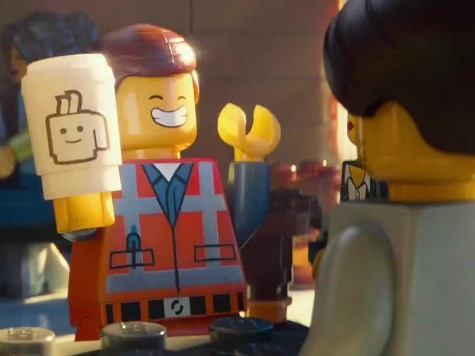This past weekend Hollywood had it collective jaws drop when The Lego Movie debuted with $70 million at the box office. This result shows a shift in perception the movie experienced, as it was openly derided initially as an empty commercial enterprise.
The weeks leading up to release, though, brought raves for its story, humor and music. The critics have been overwhelmingly positive.
All of that praise was great for business, but it also eclipsed the earlier cynicism about the property being a feature-length toy commercial. The fact that the film was made at all is a result of Hollywood experiencing an evolution in the realm of product placement.
While certainly not the first movie to be based on a retail item, The Lego Movie shows studios are warming to newer marketing options in film.
The common placement practice has characters shown using a particular brand on screen–a performer drinks from a bottle “label out,” for example. Viewers, however, have adapted to these visuals, becoming resistant to the overt pitches and even being pulled out of the movie’s universe as a result.
To make the product placement more palpable one method involves working with companies to have their products woven into the story line of the movies. One film that led the way was Terminator: Salvation. The 7-11 retail chain was a promotional partner, and that movie staged scenes of characters taking refuge inside one of those stores as part of the plot.
The method was used last summer for the relaunch of the Superman franchise, Man of Steel. Gillette razors had a stake in that title, but they avoided a blatant logo display in the course of the film. Instead the company used extensive advance marketing, and this meant when Clark Kent went to the mirror to shave in one scene audiences made the corporate connection.
Beyond razors numerous other companies were similarly featured, which many fans considered a studio selling off plot points to the highest bidders.
The larger perspective may be that this is becoming a welcome, and sometimes needed, method of getting a film made.
For Steel, Warner Bros. teamed up with more than 100 promotional partners. The production budget for the film swelled to north of $225 million, but the studio mitigated its financial exposure. Those partnerships made ahead of filming netted the studio $160 million, and this allowed for a bigger budget to get a franchise under way.
In more stark fashion were the product relationships for the recent James Bond entry, Skyfall. Heineken alone paid tens of millions to be imbibed on camera by the superspy, which created an outcry from his martini-sipping fans.
The reality, however, was the cash-strapped studio MGM could only get the film produced with the numerous companies licensing screen time and contributing marketing on behalf of the film. This creates a paradox for fans: is it worse to see a character manipulated for marketing, or to have the character become unavailable financially?
Last year saw the downside of this trend with a growing number of titles where merchandise was not only displayed but integrated as major plot points. The Adam Sandler Grown Ups 2 was loaded with product placement, with extended scenes taking place in and around one store of promotional partner K-Mart.
The action-choked chase film Getaway had one main car–a Ford Mustang Shelby Cobra–featured so prominently it basically was one of the main characters.
Probably the most disturbing corporate plot point had to occur in the children’s animated feature Free Birds. The movie involved turkeys travelling back in time in a bid to prevent becoming the annual Thanksgiving menu item. The climax of the film centered on Chuck E. Cheese pizzas being delivered to the pre-colonial pilgrims.
The next step from product integration is the full scale assemblage of a movie around a product. The LEGO Movie is just that, but it nearly did not get made, as recent attempts at similar concepts have been disappointing. Warners delayed the film’s production at one time, and studio bosses were hesitant after the disappointment of the product-based film, Battleship.
While the Transformers franchise has been monstrously successful (due more to computer artistry than product affection) more common are the dismal results seen from Bratz, Dungeons & Dragons, or Masters of the Universe.
Last summer another fully immersed product-film was attempted, one apart from established children’s properties. The Internship was centered entirely on the corporate image of Google, by placing two middle-aged characters into the company’s workplace environment.
Those appalled by these corporate-centric movies may be calmed at this particular failure. The intent was Google would be shown as a forward thinking, creative, and exciting corporation on screen, but the movie was a retrograde bore that was abjectly unfunny.
However any chance that film’s failure would stifle future product-films has been countered with the Lego success.
As a result many projects of a varying similarity in development are becoming fast-tracked. A film based on the Ouija Board game is set for a release later this year, just before Halloween. Legendary Pictures is working on a script for the rights they have on the Hot Wheels toy cars, and Illumination Productions is working on a project based on the Uglydolls plush toy line.
This push may also help another long-delayed toy centered film. The toy and game maker Hasbro has its own entertainment division, and it has long been trying to get a movie made based on its Stretch Armstrong property.

COMMENTS
Please let us know if you're having issues with commenting.